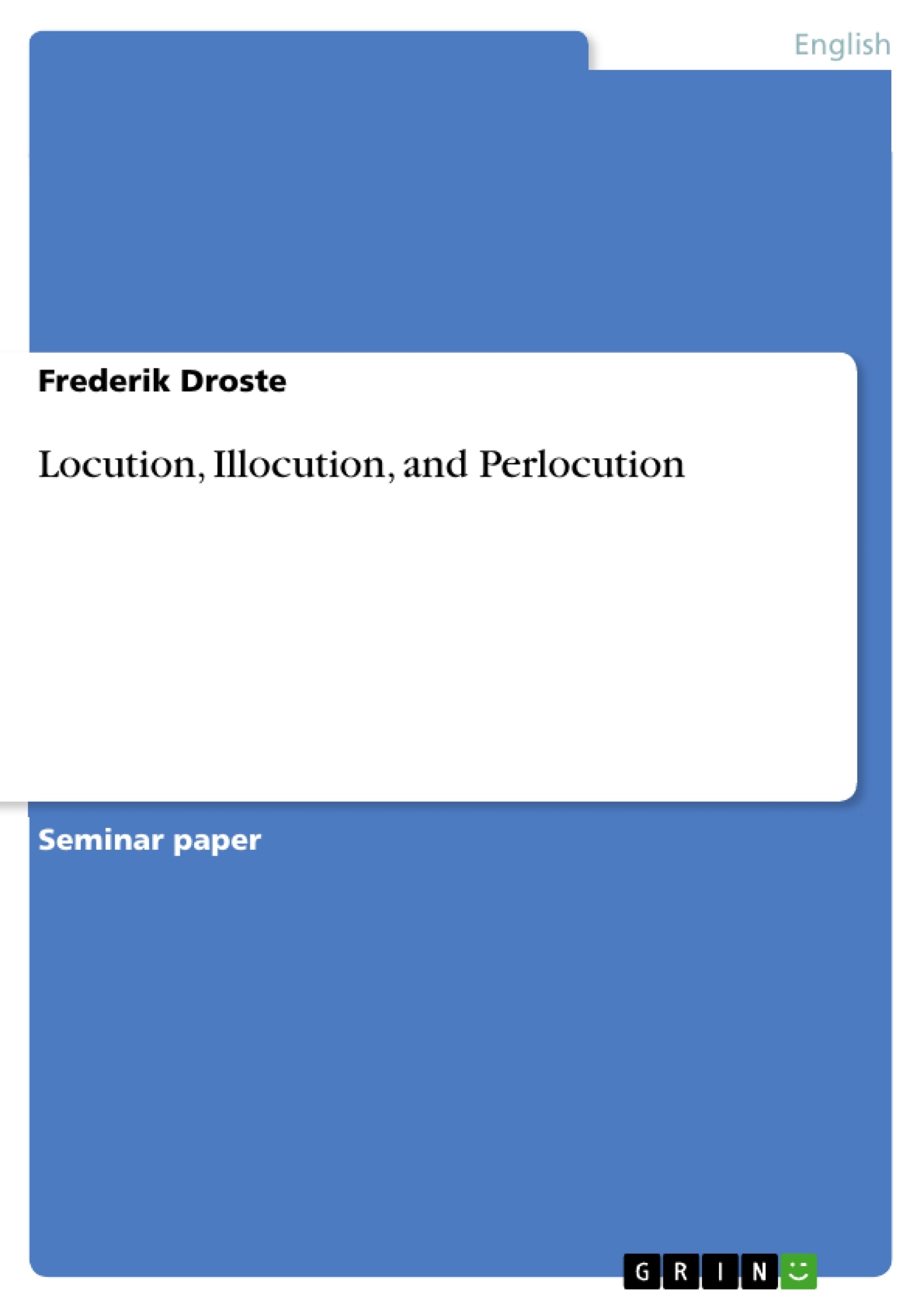The following seminar paper deals with John L. Austin’s “How to Do Things with
Words” and the established speech act theory in it. First, since Austin is the
originator of the three-part division ‘locution, illocution, and perlocution’, his life
and lectures will be shortly reflected. Because of the fact that the introduced
perlocution is based on the illocution and locution, I will start analyzing the latter in
order to maintain this stream of logic. Furthermore, problems this approach brings
along will be explained and several everyday-life examples will support the
arguments. In conclusion, the influence of Austin’s speech act theory will be
evaluated.
Table of Contents
- Way of Proceeding
- John L. Austin and His Lectures in “How to Do Things with Words”
- Locution
- Illocution
- Perlocution
- Resulting Assumptions
- Speech Acts in General
- Complexity of Speech Acts
- Conclusion
Objectives and Key Themes
This seminar paper examines John L. Austin's "How to Do Things with Words" and the speech act theory it established. It aims to explore Austin's life and lectures, analyze the concepts of locution, illocution, and perlocution, and discuss the implications of this theory.
- Austin's Life and Lectures in "How to Do Things with Words"
- Locutionary Acts: Phonetic, Phatic, and Rhetic Acts
- Illocutionary Acts: The Intended Meaning and Force of Utterances
- Perlocutionary Acts: The Effects of Utterances on the Listener
- The Importance of Speech Act Theory in Linguistics
Chapter Summaries
The paper begins by introducing John L. Austin and his seminal work "How to Do Things with Words". It provides a brief biographical overview of Austin and highlights the significance of his lectures in developing the theory of speech acts. The paper then dives into the three primary components of speech acts: locution, illocution, and perlocution.
The chapter on locutionary acts analyzes the different levels involved in uttering a sentence, namely the phonetic, phatic, and rhetic acts. The paper clarifies these components through examples and discusses the importance of isolating these acts to understand the metalinguistic features of an utterance.
The chapter on illocutionary acts will delve into the intended meaning and force of an utterance. It will explore how speakers convey their intentions through the use of language and how these intentions can vary depending on the context.
Keywords
The key terms explored in this seminar paper include: locutionary acts, illocutionary acts, perlocutionary acts, speech act theory, "How to Do Things with Words", John L. Austin, and language in context. This paper delves into the relationship between the utterance and the intended meaning and effects within a specific context.
- Quote paper
- Frederik Droste (Author), 2013, Locution, Illocution, and Perlocution, Munich, GRIN Verlag, https://www.grin.com/document/214710




